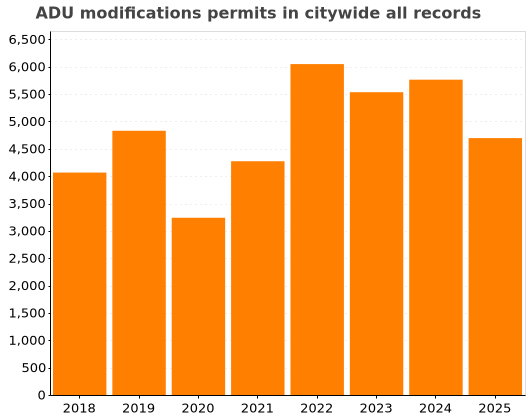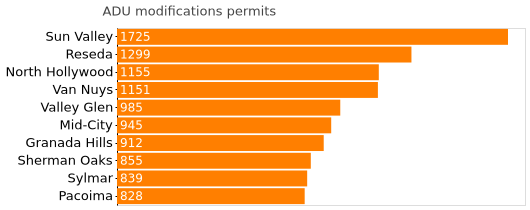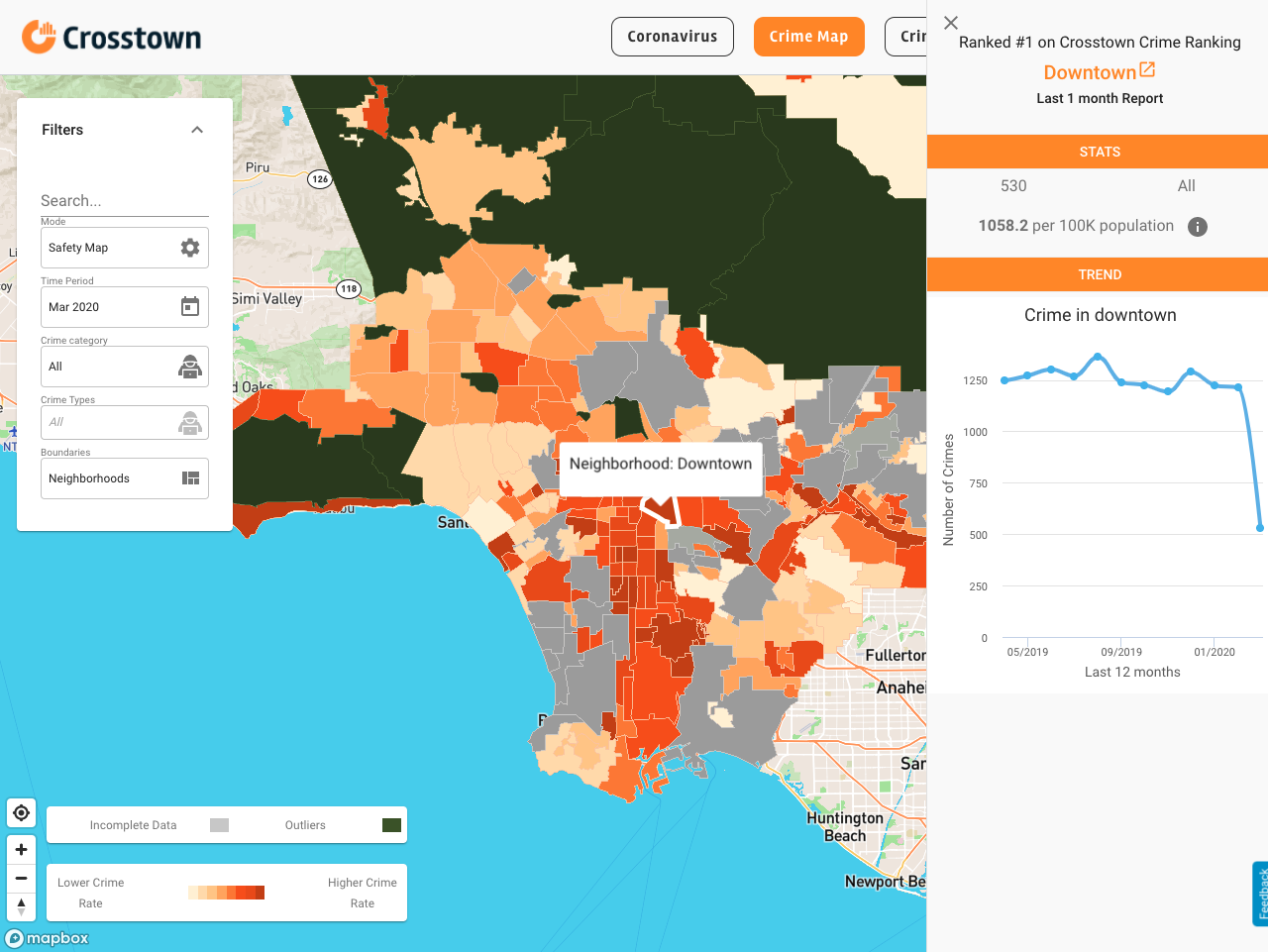ADUs lift Los Angeles’s otherwise dismal housing market

(Image generated with MidJourney)
(The charts in this story have been updated to include more recent data.)
Amidst Los Angeles’s otherwise out-of-control housing market, one bright spot is emerging: Accessory dwelling units, or ADUs, are popping up all over the place.
ADUs are smallish apartments made from either converted garages or new structures erected on lots next to existing houses. They were made possible by a 2017 state law that stripped away bureaucratic hurdles.
Last year, the city of Los Angeles permitted 6,626 of them, the second-highest count on record, according to a Crosstown analysis of data from the Department of Building and Safety. The proliferation of ADUs stands in contrast to an otherwise anemic housing construction market. In 2024, the city permitted only 7,038 new apartment units, the lowest level in over a decade.
ADU permits in Los Angeles 2018-2024
2025 data runs through Sept. 30

The city has set a goal of adding 463,643 new housing units this decade. It’s nowhere close to meeting that target. Lack of housing supply has pushed up rents and property values in the city, exacerbating other issues, such as homelessness.
But ADUs seem to be bucking the trend. The permitting process is usually much faster than what is required for a new home or an apartment block. And the costs of building one are often within the range that existing homeowners can manage.
Here are the neighborhoods in Los Angeles that have added more ADUs than any other since 2018:

Added value
Babak Mortazavi is one of the principals of LADU, which provides a soup-to-nuts service for permitting, financing and constructing an ADU. “Business is good,” he said. “It’s a clear value proposition.”
Construction costs usually run between $250-$500 a square foot, he said, not including fees for permitting. Yet, the resulting value it provides to the property is closer to $600 a square foot.
The often long wait times that slow down many new construction projects are usually milder for ADUs, he noted. “The city is supposed to respond within 60 days,” said Mortazavi. “That’s the goal. The reality is a little longer than that.”
Not all ADUs wind up as satellite apartments ready to be rented out. Still, ADUs now account for about 43% of new permitted units in Los Angeles, according to data from the Department of Building and Safety.
Close quarters
One advantage of ADUs is that they can be sited in neighborhoods of single-family homes, where it is otherwise extremely difficult to put new housing. The top neighborhoods for ADUs are Sun Valley, Reseda and Van Nuys.
Two years ago, Albert Epps spent around $50,000 converting his garage into a two-bedroom, two-bath apartment in Van Nuys. The market rate for a similar apartment in Van Nuys goes for over $3,000 a month. He charges below that. The investment has more than paid for itself, though he was caught off guard by the additional layer of bureaucracy that comes in Los Angeles with being a landlord. His property taxes also went up.
Still, he’s happy with the result. “As long as you find a good contractor, get the permits, it ends up being a good experience for everyone – for the tenants we have, who are trying to save money to buy a house, for us, when we need someone to take the dog out and we’re not at home,” he said.
How we did it: Crosstown analyzed nine years of permit data from the Los Angeles Department of Building and Safety to calculate the number of ADUs the city allowed to be constructed.
Have questions about our data? Write to us at askus@xtown.la






